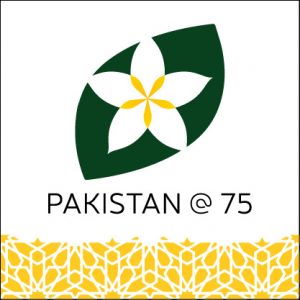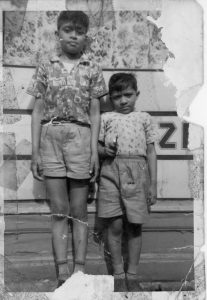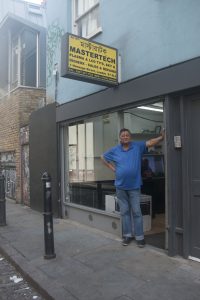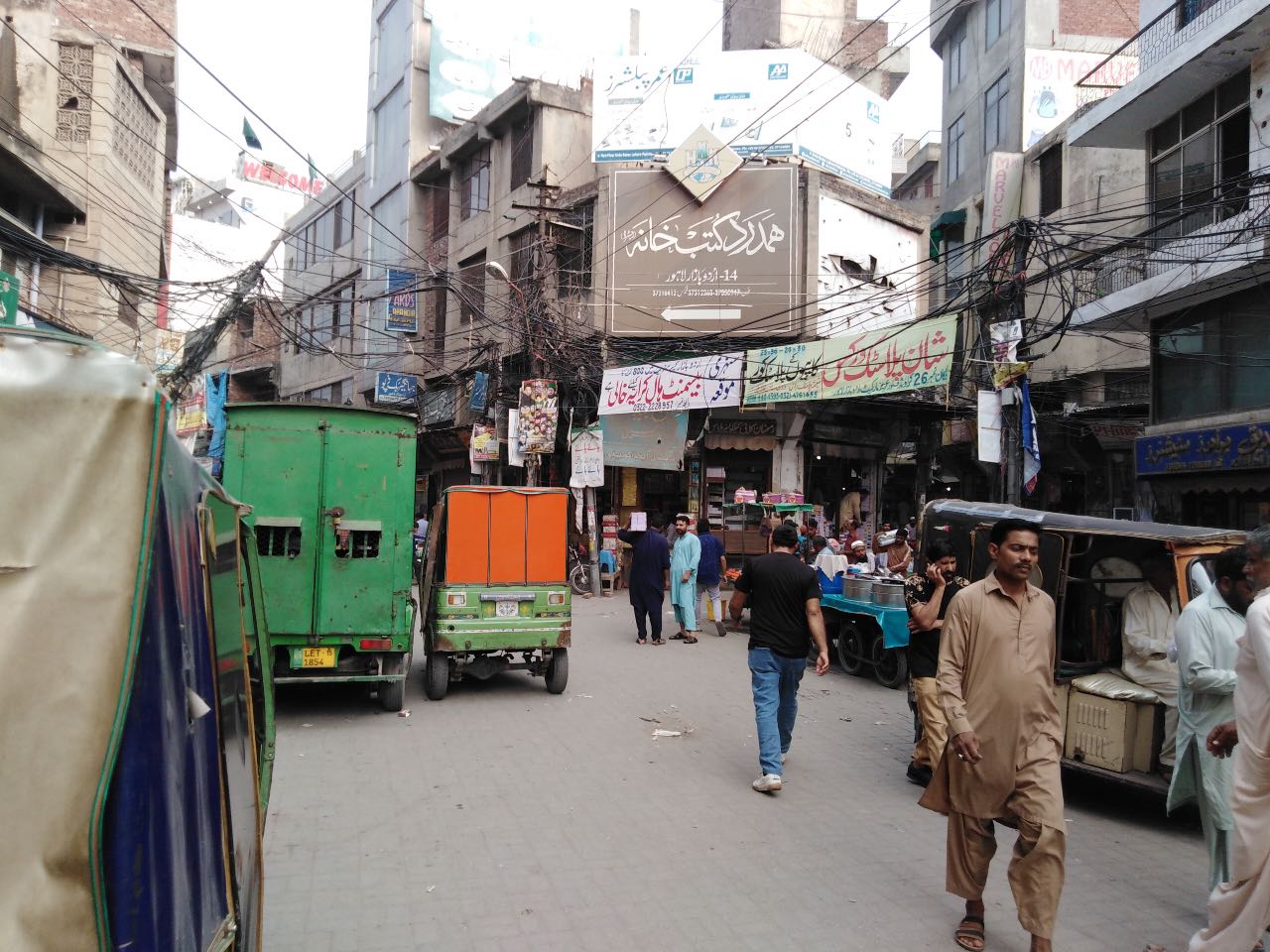 This post tells the story of one café on one street in London. The life-story of the late Abdul Razak from Lahore, and his Star Café on Brick Lane, by Seán Carey is also a commentary on the changing opportunities, choices & profile of successive generations of immigrants from South Asia & elsewhere, as London gradually transforms ‘from a fading imperial capital to a dynamic, services-oriented global city’.
This post tells the story of one café on one street in London. The life-story of the late Abdul Razak from Lahore, and his Star Café on Brick Lane, by Seán Carey is also a commentary on the changing opportunities, choices & profile of successive generations of immigrants from South Asia & elsewhere, as London gradually transforms ‘from a fading imperial capital to a dynamic, services-oriented global city’.
Bangladeshi-owned grocery stores, barbershops and curry cafés and restaurants dominate the southern end of Brick Lane in London. These diverse businesses, along with a few Islamic bookshops and the Jamme Masjid (mosque), comprise ‘Banglatown’, a deliberate attempt dating back more than two decades to replicate some of the social, cultural and economic success of London’s older ethnic quarter, Chinatown.
The presence of a sizeable British Bangladeshi population in east London can be attributed in part to the fact that, by the middle of the 19th century, a small number of sailors (known as ‘lascar’) from the Sylhet region of east Bengal had settled in the Spitalfields neighbourhood. A few more arrived after the First World War, but the majority of Bengalis came after Bangladesh’s independence from (West) Pakistan in 1971. The men were the first to arrive, followed by their dependents.
Yet small groups of other South Asians, aside from Sylhetis, have also found a home in the neighbourhood in more recent times. Abdul Razak, for example, was born in Lahore (in modern Pakistan) in 1927 and managed three restaurants in Karachi before arriving by ship in Liverpool in 1957. Like others looking to maximise their economic opportunities, he made his way to Jewish-dominated Spitalfields, a relatively safe district for brown and black migrants. Abdul briefly worked at ‘Halal’, once a Yemeni-owned café with an ethnically diverse clientele in the Aldgate area (just south of Brick Lane) that was most likely established in the early 1900s. (‘Halal’ is now a curry restaurant run by a Keralan Muslim family that attracts a devoted following of people working in the capital’s premier financial district, the Square Mile.)
Having gained knowledge of the marketplace, Abdul rented 66 Brick Lane, a corner site at the southern end of the Lane, from a Jewish landlord and opened the Star Café in 1958. The Star Café is historically significant because it heralds the beginning of the modern era of curry cafés and restaurants on the street. Abdul served a limited menu of Punjabi café-style cuisine, similar to what he had previously offered to his Karachi customers but with some adaptations based on east London’s local café culture. ‘My father had a two-page menu printed’, recalls his oldest son Javed Iqbal, who now runs a TV repair shop on a Brick Lane side street. ‘On the left-hand side were the drinks — tea and coffee and Pepsi and Tizer — and, on the right, the curries and other things. He used white onions — there were no red onions at that time — garlic, ginger, lemon and green chilli and, of course, tomato. Salt was added plus whatever spices were available, and then chicken or mutton would be put in the pot.’ The cooking pot always had a lid placed on it, and so the result was that ‘although the gravy started thin, it ended up neither thick nor thin, but somewhere in the middle’. Bone-in chicken and mutton curries and a keema (minced mutton) curry were always available. So too were plain rice, chapatis and parathas.


Left: Javed (9 years) and his brother Tasleem (7 years) outside Star Café, 66 Brick Lane, London E1, 1960. Photograph by Abdul Razak; used with permission of the family by author. Right: Javed outside his shop, 1 Heneage Street, London E1, 2022. Photograph by Raju Vaidyanathan; used with permission by author.
Unsurprisingly, labour input was frequently a family affair, which, of course, helped to reduce costs but also promoted family social bonds. ‘I used to mix the atta — the flour — water and salt in a steel pot for the chapatis and parathas in the morning before I went to school’, recalls Javed. Red lentil dal was also available at the Star Café, though this was contingent on having access to a sufficient quantity of raw ingredients. ‘Even spices were scarce back then, unlike nowadays when everyone has a smartphone, making buying anything really easy’, he says.
Customers’ meat curries and vegetable dishes at the Star Café were individually heated and assembled in cast-iron pans using the pre-cooked pot curries. What is more, if a customer preferred potato or spinach with their curry rather than as a separate or combined dish, Abdul could incorporate the item, a technique he had learned in Karachi in the early 1950s. Cooking intelligently in small amounts with a pan in this manner resulted in little to no waste, and minimal energy consumption. ‘You must remember that in those days, having a fridge was a luxury, so everything had to be used up on the day’, says Javed.
Although a halal butcher had been established in the early 1940s, there was none to supply the Star Café in the late 1950s. The area retained a significant retail infrastructure despite the fact that the Jewish population in Spitalfields was declining as families moved to London’s northern or eastern suburbs. Abdul was content to purchase mutton and chicken from a local kosher butcher. As a result, he attracted religiously observant Hindi- and English-speaking Jewish migrants from Bombay (Mumbai). As Javed explains:
In this [Spitalfields] area, most Jews came from Eastern Europe, but my father discovered a couple of hundred people he called ‘Bombay Jews’ — they were Indian Jews, and most lived in Stepney Green. They definitely wanted kosher food, but they also wanted something spicy because English food, mainly boiled food, didn’t suit them. So, what my father could give them — mostly the men who made their living buying bits and pieces from one [garment factory] owner and selling them to another, while the women stayed at home — wasn’t exactly the same as what they were used to before leaving India. But at least it was 70 per cent of the taste, I would say.
Once a week, on Friday or Saturday, customers at the Star Café could also enjoy a special curry made with paya (sheep trotters). But there were no appetisers or snacks on the menu, such as kebab, pakora or samosa. This was partly because a fellow Punjabi, who owned a shop on nearby Old Montague Street, another of the Lane’s side streets that also housed several Ashkenazi-owned cafés, had already cornered the market for such snacks, and partly because Abdul calculated that preparing such items would take up too much of his time. Chai (tea) and coffee, on the other hand, were easy to prepare, and always available. In response to consumer demand for something sweet to finish the meal or eat with a cup of tea or coffee, the offering broadened to include a variety of English-style cakes sourced from a local family-run bakery.
The Star Café, like nearby Jewish cafés and restaurants (including the renowned Bloom’s, which opened in 1920 and closed in 1996), was never ethnically or socially exclusive. Over time, this meant that a diverse range of people seeking familiar or even unfamiliar foods — ‘eating the other’ to use bell hooks’ apt phrase — were willing to step through the doorway. That was unquestionably financially beneficial to the business’s bottom line. In short, the Star Café was a liminal space that focused on curry but also drew pragmatically on multiple culinary traditions in order to maximise turnover and profitability. This endeavour, of course, was undertaken against the backdrop of London’s gradual transformation from a fading imperial capital to a dynamic, services-oriented global city. As a result, consumer behaviour was beginning to shift dramatically, particularly in the hospitality sector, which, with low barriers to entry, provided an entry point for hardworking migrant groups. Says Javed:
White people did come to the café — people working in offices in the City around Liverpool Street, for instance. And at that time there were a lot of other people working in the banks — Barclays, Midland and NatWest — on Commercial Street. Eating a curry was something new for them, and they really enjoyed it. The Old Spitalfields Market workers also came, and so did visitors to the markets on Sundays. It was a day out for them — like going to the seaside but costing less money. And, if they didn’t fancy curry and wanted a fried egg on toast, they could get that too, as long as they came before 10 o’clock.
While money was a principal concern for Abdul, it was far from the only one. He was eager, like many first-generation migrant café owners, to use his business premises to raise his social status among his fellow Punjabis by assisting them in reliving fond memories of ‘home’ as a significant part of their diasporic belonging. As Javed recalls:
Once a month, on a Saturday or Sunday, we would close early and musicians would come and perform a concert for my father’s Punjabi friends, who lived nearby. Their wives provided food, as well as [South Asian] sweets they had bought at local shops. My father didn’t make any money out of it because there was no charge to attend.
The Star Café was open from 9 am until 8 pm, but the busiest time was lunchtime, between 12 pm and 3 pm, when most South Asian men ate their main meals. However, the café closed in 1969 after several lorries damaged a side wall, forcing the building to be demolished. ‘It takes years to build a business and only a few hours to finish it off’, laments Javed. Abdul then went to Karachi and Lahore, where he organised a song and dance troupe that toured Pakistan, Iran, Turkey and Yugoslavia, before he brought it to the UK. He then took over the Meraz Café at nearby 56 Hanbury Street. Nevertheless, running a Punjabi-branded café in Spitalfields in the 1970s was difficult because the vast majority of Indian Jews had left the area and many Bangladeshi Bengalis boycotted (West) Pakistani-owned businesses. As a result, Abdul returned the café to its Sylheti owner for him to try his luck with a large ‘Indian’ restaurant in Judd Street near Euston Station in the early 1980s It traded for less than a year. Says Javed:
The Euston restaurant was a posh place, but in those days, curries weren’t that expensive, so you didn’t make that much money. With high rent and rates, it was difficult for my father to keep going. You must remember that in the catering trade, the freeholder is the one who always holds all the cards. In any case, at that time, the biggest and busiest area of the West End was Soho — Chinatown was the place everyone used to go to eat. After the Euston business closed, he lost all interest in cafés and restaurants and went to work as a minicab driver for another Pakistani bloke in Brick Lane. He took the job primarily to fill time. On 13 May 1997, he passed away. When I was younger, he would tell me: ‘London is my home, and this is the best country in the world’. He was referring to his business success despite arriving as a pauper, being unable to read or write, and like everyone in those days facing a lot of racism. In some ways, he was right that London had become his home. But it was really Brick Lane that was the making of my father.
The views presented here are those of the author and not of the ‘South Asia @ LSE’ blog, the LSE South Asia Centre or the London School of Economics & Political Science.
Banner image: Abdul Razak (left, as an officer in the Pakistan Air Force) next to actor Patrick Jordan (centre, as ‘Sergeant Major’) on the sets of ‘Too Late the Hero’ (1970). Every effort has been made to identify the photographer; ‘South Asia @ LSE’ will be happy to update this blogpost if verifiable copyright ownership information is sent to us. This photograph has been given by Abdul Razak’s family, and used with their permission by the author.
The ‘Pakistan @ 75’ logo is copyrighted by the LSE South Asia Centre, and may not be used by anyone for any purpose. It shows the national flower of Pakistan, Jasmine (Jasminum officinale), framed in a filigree design adapted from Islamic architecture. The logo has been designed by Oroon Das.








Fabulous article by Dr Carey. I can almost smell the spices. Visiting Brick Lane and sampling its wares will be top of my “To do list” when in London next.